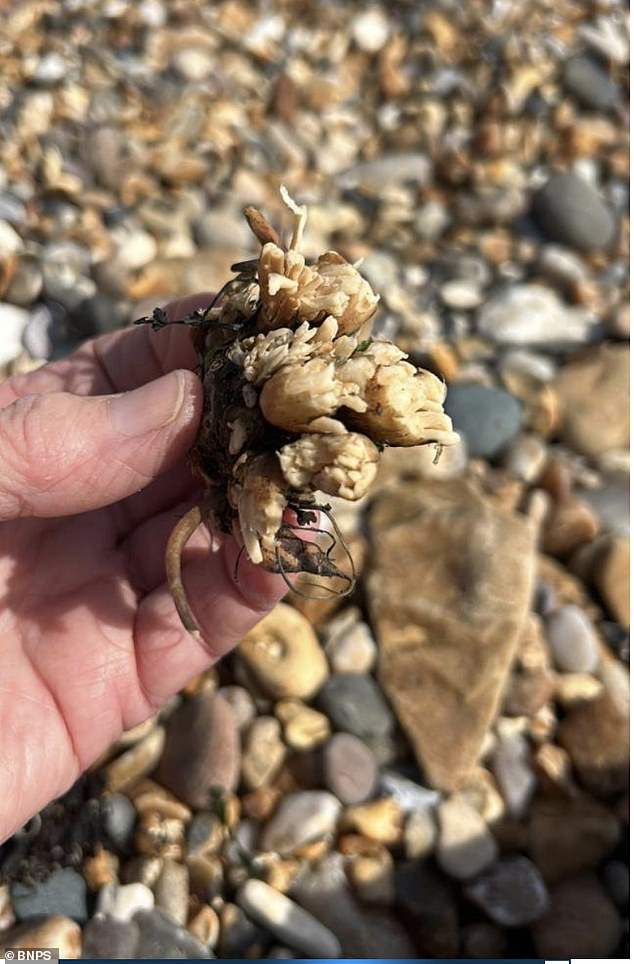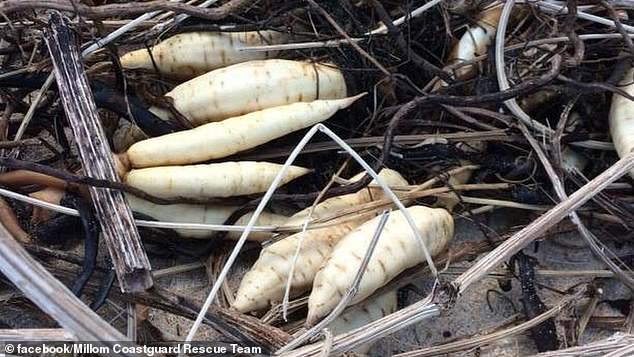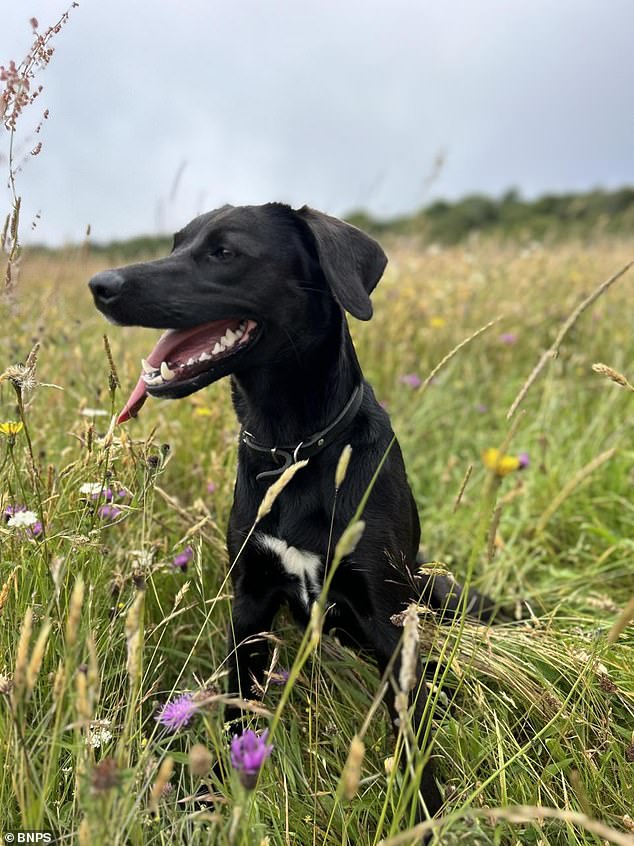A dog died just 40 minutes after eating a poisonous plant called ‘dead man’s fingers’ while walking on the beach.
Lula, a Collie and Labrador cross, died shortly after eating hemlock, one of Britain’s most poisonous plants.
I was walking in Lyme Regis, Dorset, with a dog handler when it ate the plant.
Lula then began to have seizures and spasms before She tragically died in the car while on the way to the vet.
The discovery of a dead man’s fingers prompted Lyme Regis Council to order the plant to be removed from the banks of the River Lim and send warning letters to local landowners.
Lula (pictured), a Collie and Labrador cross, died shortly after eating hemlock, one of Britain’s most poisonous plants.

The remains of the water hemlock that Lula ate while walking on the beach at Lyme Regis, Dorset
Lula’s owner, Dr Kirsten Young, was working for Greenpeace and the University of Exeter in the Azores when the tragic accident happened.
Flora Bamford, 60, a family friend, received a panicked call from Dr Young after learning that Lula had fallen ill during the walk.
She said: ‘Kirsten had just flown to Portugal where she works.
‘She had a dog sitter who would take Lula to Church Beach in Lyme Regis.
‘I got a call from Kirsten, she said the dog sitter had called in a panic and that Lula was having seizures and spasms.
‘She had been walking along the beach and ate something that turned out to be hemlock root.
‘It’s really dangerous, the time between when she ate that plant and the moment she was affected was only 15 minutes.
‘The people were amazing, one man emptied his beach cart and put Lula in it. I picked them up at the clock tower and managed to get her into my car.

Pictured here is the parsnip-like root of the plant, which has been described as Britain’s most toxic and no other British plant has caused more fatalities. In the past, humans have died from eating it.

The discovery of a dead man’s fingers has prompted Lyme Regis Council to order the plant to be removed from the banks of the River Lim and to send warning letters to local landowners.
“I drove to the vet in Axminster and she was having terrible fits and blood was coming out of her mouth. Lula died before we got to the A35.
“It was horrible, within 40 minutes of eating the plant, she was dead.”
The plant has been described as Britain’s most toxic and no other British plant has caused more fatalities. In the past, there have been human deaths from ingesting it.
Miss Bamford added: ‘The vet didn’t even know what it was, the dog’s handler went back to the beach and managed to find the remains of the plant.
‘It grows in the Lim River. It is the roots that are dangerous for both dogs and humans. A storm must have washed them ashore.
“Who knows how much is there, but it’s very worrying because it’s a popular dog beach.”
Mark Green, deputy clerk of Lyme Regis Town Council, said: “We have never had such a serious incident in the past due to this plant, it is fair to describe it as a one-off.
‘It was a huge shock for everyone.
‘The Lim River is not our responsibility, however, we are clearing this plant from the riverbank wherever we can.
‘We have also produced a letter, which we are delivering to all landowners adjacent to the river, providing information about the plant and its potential risks.
“We are asking people not to cut it down and throw it into the river. We are also putting up signs to warn people to be careful with this plant.”

